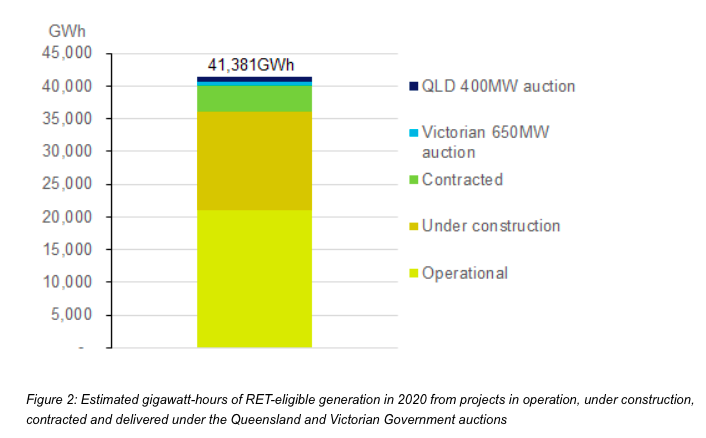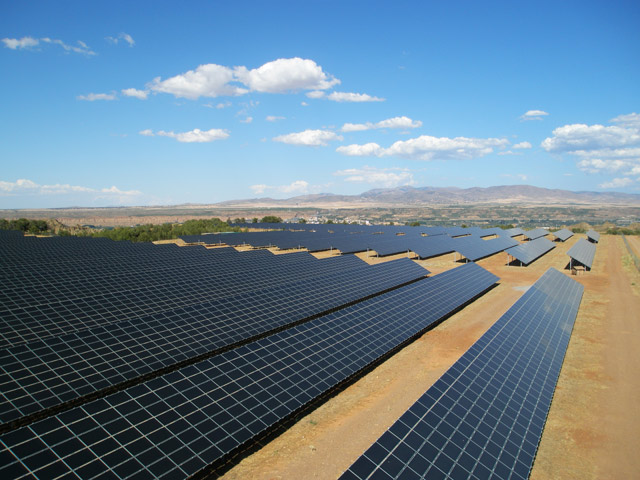Work needed to meet Australia’s Renewable Energy Target was completely stalled at one point, the target itself has been undermined and criticised, and then to break the deadlock the renewable sector acquiesced to it being reduced. Yet despite all of this, it has been officially confirmed today, it will be met.
The Clean Energy Regulator has announced that there will be sufficient renewable energy connected and generating on Australia’s electricity networks by 2020 to generate 33,000 GWh of electricity – thereby meeting the mandated target.
The announcement is proof of the speed at which solar and wind projects can be contracted, financed and built – when policy certainty is provided. It has also made a mockery of the Coalition Government’s prior claims that it was “simply not possible” to achieve the previous RET – which had stood at 41,000 GWh.
The previous Coalition environment minister Greg Hunt had asserted, with no evidence to support it, that the RET could not be met as a part of the Liberal and National parties’ campaign to have it reduced. He warned that because of that electricity retailers would be forced to pay the penalty for falling short of the renewable obligation – and pass it onto consumers.
In an interview on Sky News on December 23, 2014, Hunt set out the claim – which has now been proven risible at best.
“It’s simply not possible to build what is required [by the 41,000 GWh RET] between now and 2020. And if you don’t do that, you hit what is an effective carbon tax penalty of $93 a tonne.”
At the time, the claim left many in the solar PV industry scratching their heads. As far back as 2012 Germany installed 7.5 GW of solar PV capacity in a single year – in a densely populated country with limited land for ground mounted solar, and at a time that the price for PV modules was significantly higher than what it is today.
Modelling released last month by Green Energy Markets’ Tristan Edis has revealed that the original RET of 41,000 GWh would likely be achieved given the current boom in wind and, particularly, solar PV development underway right around Australia.

In announcing the RET’s accomplishment, the Clean Energy Regulator also noted that the small-scale technology certificate (STC) market is in surplus of 5.5 million certificates. It added: “This is likely to grow the end of the year.”
On the back of this, STCs will likely fall in price – effectively increasing the price of a solar PV system to the end consumer.
This content is protected by copyright and may not be reused. If you want to cooperate with us and would like to reuse some of our content, please contact: editors@pv-magazine.com.









Would someone please explain why these solar farms are not being planned as multi use. They are an excellent water catchment that could be stored and also a great shade provider for animals and plants if made slightly higher off the ground. It seems a very wasted opportunity.